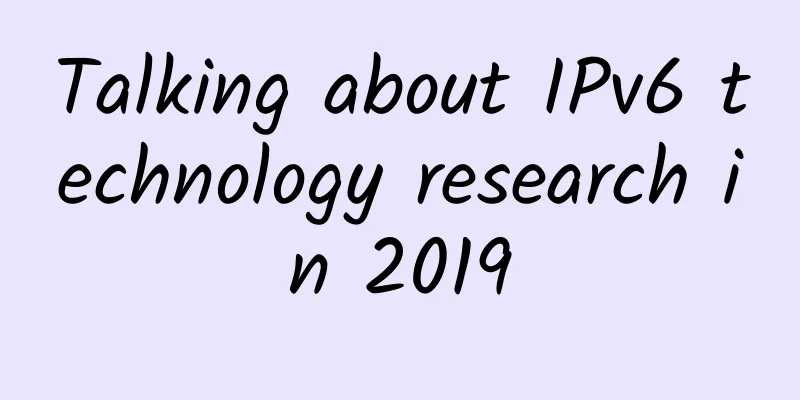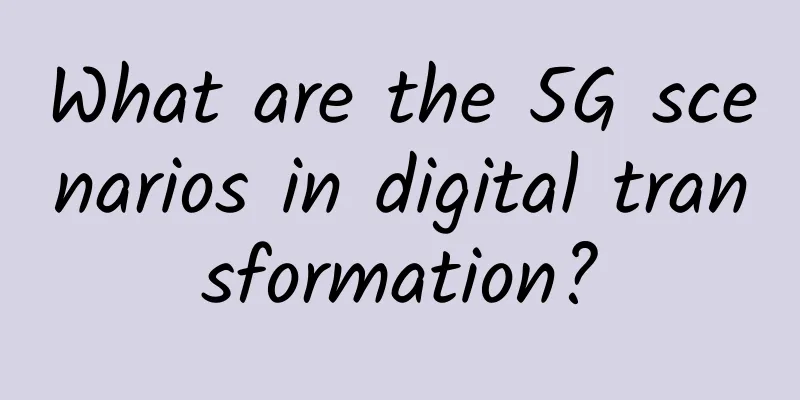Talking about IPv6 technology research in 2019

|
In March 2019, the "Report on the Implementation of the 2018 National Economic and Social Development Plan and the Draft of the 2019 National Economic and Social Development Plan" was officially released. The report listed 70 large-scale engineering projects that China will promote in 2019, among which 5G and IPv6 were listed as the tenth major project: "Accelerate the pace of 5G commercialization and large-scale deployment of IPv6, and strengthen the construction and integrated application of new infrastructure such as artificial intelligence, industrial Internet, and Internet of Things". In 2019, IPv6 entered the second stage. It is expected that by the end of 2020, IPv6 traffic must account for 50%, and new networks will no longer use IPv4. The top Internet applications, enterprises, institutions, and fixed and mobile networks of operators must all support IPv6 commercial use. The IPv6 protocol is not a simple extension of the IPv4 protocol, nor can it be used directly. IPv6 also has to face the emergence of some new problems, so IPv6 itself must continue to innovate. As a result, many new IPv6 technologies have emerged, which are completely tailored for IPv6 technology and are deeply imprinted with IPv6 technology. Next, we will introduce several currently popular IPv6 technologies.
SRV6 Technology Segment Routing (SR) technology is a source routing mechanism proposed by Cisco. It aims to introduce controllable label allocation in IP and MPLS networks, provide advanced traffic steering capabilities for the network, and simplify the network. There are two SR methods, one is Segment Routing based on MPLS (SR-MPLS), and the other is Segment Routing based on IPv6 (SRv6). SRv6 is a combination of IPv6 and SR technology. Relying on the flexibility of IPv6 addresses, it supports tunnel functions through the extension of IPv6 packets, thereby canceling the MPLS forwarding bearer technology, unifying ordinary IP forwarding and tunnel forwarding, and simplifying the network. SRv6 uses SRH (Segment Routing Header) embedded in IPv6 data packets, supporting SRH nodes to read headers, update pointers, exchange target addresses and forward. This is an SR technology based on IPv6 networks and is still an IETF draft. SRv6 started the standardization process in 2017. In just one and a half years, there are more than 50 drafts covering all aspects of networking, which shows everyone's enthusiasm for SRv6 technology. However, SRv6 has some special requirements for ASICs. SRv6 nodes must perform multiple operations along the SR path, including reading the SRH, rewriting the IPv6 destination field to the next node in the path, updating pointers, and performing node-specific operations. We have not yet seen the emergence of network devices that support SRv6. It is still in the technical research stage. I believe that support for SRv6 will be added to later ASICs. In software, the Linux kernel supports SRv6 in kernel version 4.10 through the SREXT kernel module, and the open source FD.io project also supports SRv6. SRv6 is essentially the implementation of SR in IPv6. Given that the application of IPv6 protocol itself is not as popular as IPv4, SR-MPLS is more practical at present. Moreover, SR-MPLS does not require any special ASIC requirements, only specific SR-MPLS control plane software, which does not affect the ability of ASIC to forward packets, and has been put into practical application. DIP (Deterministic IP) Technology The newly added Flow Label field in the IPv6 packet header provides a more convenient network layer identification method for flow-based differentiated services, so that the router's identification of flows no longer relies on the traditional five-tuple. It can accurately identify flows and match corresponding flow forwarding strategies without parsing the TCP/UDP four-layer transport layer packet header. The original "Best Effort" of the IP protocol can no longer meet the needs of differentiated services in new application scenarios. The IETF DetNet working group has hatched the DIP (Deterministic IP) technology. DIP can achieve end-to-end delay determinism and large-scale scalability of the three-layer large network through deterministic message scheduling and core stateless network architecture, so that deterministic forwarding services can be provided for high-priority flows in the IP network. Multi-homing technology Multi-homing technology is an important network service mode, which has the advantages of improving network reliability, achieving balanced complexity, increasing network bandwidth, and ensuring transport layer survivability. Multi-homing is not a new concept of IPv6, but deploying IPv6 in a multi-homed environment will still encounter many new problems. The automatic configuration function of IPv6 uses a well-formed ICMPv6 router advertisement (RA) to cause the device to install the default route of the transmitting router. When more than one router sends such a packet, the problem will arise. Although the possibility of two routers sending such a well-formed packet is very small, in a test network, the router advertisement can easily slip out and run to the production environment or to a different test network, causing serious damage. Multi-homing problems can cause traffic to appear to be lost or never sent. The difference is that it sometimes works and sometimes doesn't, and it seems to be intermittent. This is attributed to the difference in timers or life cycles, giving the device a "recovery" period during which it seems to be operating normally. In IPv6, multi-homing problems can be solved through routing policies, host-centric policies, and gateway policies. The routing strategy uses BGP's IPv6 multi-homing or the "tunnel" mechanism of IPv6 multi-homing and the multi-homing negotiated between ISPs. The host-centric strategy uses the host to achieve link fault tolerance and complex balancing capabilities. The host selects the source address and destination address. Selecting different source addresses is equivalent to selecting different ISPs. The gateway strategy uses a gateway between the multi-homing site and the upstream ISP network to achieve the purpose of multi-homing by converting the source address. Multi-homing technology is not unique to IPv6 and exists in IPv4 networks. However, multi-homing will encounter new problems when IPv6 is deployed, so various coping strategies have emerged based on IPv6 multi-homing. In addition to the above three technologies, IPv6 also has a series of new technologies such as Mobile IP and VXLAN over IPv6. Many of them are in the draft standard stage, and everyone is actively contributing to the IETF RFC draft standard. The current IPv6 network deployment is still in its early stages. With the popularization of IPv6 networks, these new technologies have ushered in opportunities for practice, and I believe that new technologies will continue to be added. From IPv4 to IPv6, it is not just a simple increase in address length. With the help of this network transformation, IPv6 has also designed many new technologies to solve previous network problems, hoping that they will be solved by the way when the IPv6 network arrives. The evolution from IPv4 to IPv6 is irreversible, and there are a lot of network problems waiting to be solved by IPv6 technology. |
<<: 5G concept is being hyped, operators should not be too greedy
>>: The transformation path of communication engineers in the 5G era
Recommend
Why 99% of business leaders are paying attention to this issue
Digitalization and the provision of digital servi...
Which cloud SMS service is better? Borui Data released a cloud SMS evaluation report
Introduction Beijing Borui Hongyuan Data Technolo...
How to ensure the reliability and number of nodes in CAN network communication
In CAN-bus circuit design, the transceiver can th...
What kind of network slicing does 5G require?
Everyone should be familiar with network slicing....
VMISS VPS 30% off monthly payment starting from 18 yuan, Hong Kong CN2/Korea CN2/US CN2/Japan optional
VMISS currently offers a 30% discount coupon for ...
Security advantages and challenges of HTTP3 protocol
HTTP/3 is the third official version of the Hyper...
The United States has another big move for 5G: agreeing to merge two major operators
[[265869]] The Trump administration has tried eve...
IPv6 Security Thinking: Risk Analysis of Recursive DNS in IPv6 Networks
DNS (Domain Name System) is an important core inf...
The overlooked hardware vulnerabilities in enterprise networks
Typically, hackers will gravitate to the weakest ...
Yu Yang, CEO of Farmland Manager: Farmland services are delivered at one stop, and small farms also need great wisdom
[51CTO.com original article] If you see a drone f...
The wireless router is placed here, no wonder the WiFi signal is poor
How to solve the problem? Only WiFi! WiFi allows ...
The iPhone 12 finally uses 5G, but is it really too late?
At the Apple conference this morning, the most ex...
IT maintenance: Five aspects of daily switch maintenance, all practical information!
With the rapid development of informatization, sw...
Siemens Industrial Network Experts Plan to Build a Digital Industrial Ecosystem, 5G+TSN Will "Weave" a New Industrial Communication Network
[51CTO.com original article] On July 16, Siemens ...
Explain RPC and HTTP in plain language
With the continuous development of enterprise IT ...









